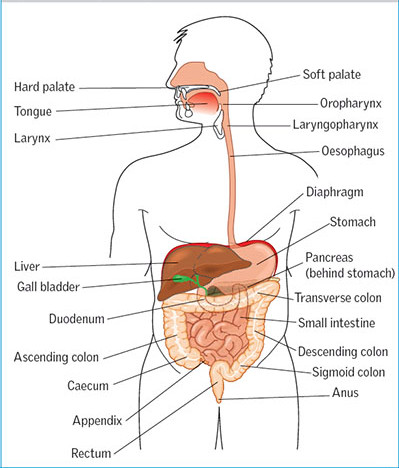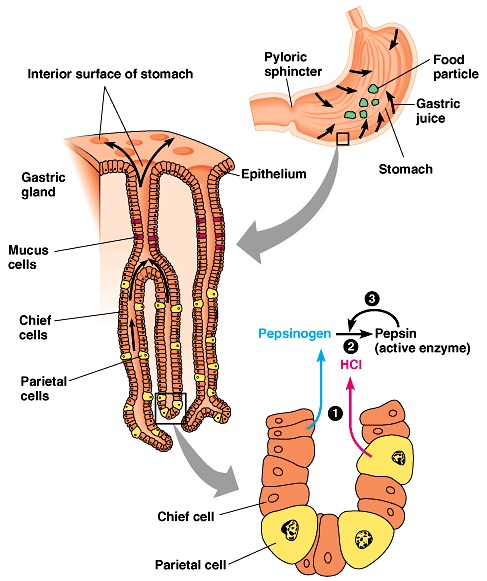- At the mouth both physical and chemical digestion takes place.
- The food is mechanically broken down by the teeth through grinding and chewing.
- This process is called
mastication.
- Mastication reduces the food into small size to increase the surface area for enzymasticaction.
- The tongue helps in manipulation of the food as it mixes the food with the saliva secreted from the salivary glands. The salivary glands are:
- Sublingual salivary gland; beneath the tongue
- Sub mandibular gland: under the jaw
- Parotid gland: Found in the cheeks in front of the ears.
- All the glands have ducts through which saliva is directed to the mouth.
- The tongue also rolls the food into small round masses called
boluses.
- The boluses are then pushed to the back of the mouth to initiate the swallowing process.
- The boluses are then moved to the stomach via oesophagus.
- Movement is facilitated by a wave of muscular contractions of longitudinal and circular muscles of the oesophagus known as
peristalsis.
- There is a flap of cartilage, epiglottis which closes the wind pipe (trachea) during swallowing.


